The school landscape inspiring children to connect with nature
Written by
01 May 2023
•
4 min read
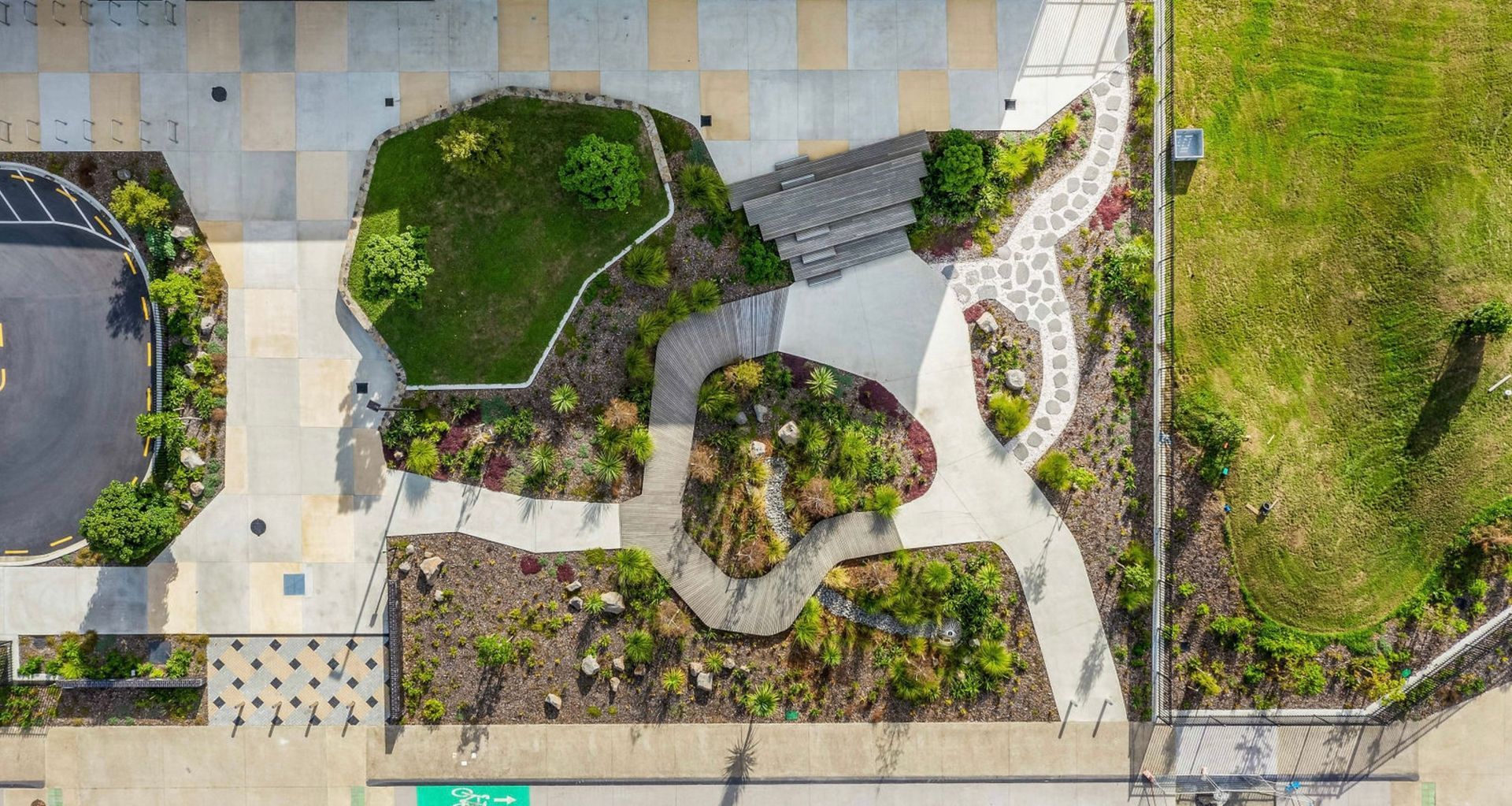
If you think back to your primary school days, it's likely many of your formative experiences took place outside of the classroom. From the playground to the sports field, school landscapes present countless opportunities for cognitive development and open-ended play — just one of many reasons why Brad Murphy, and the team at Murphy Landscapes, find fulfilment in creating these environments.
"It's nice knowing that there are going to be thousands of kids who will come through the school and enjoy the space for years to come, who will see the garden grow, and be able to relate to it and learn from it."
Completed in 2022, Mangapikopiko School is one such project. Situated within the new Park Green subdivision on the shores of the Manukau Harbour, the design of Mangapikopiko School was informed, in part, by its foundational students and teachers drawn from nearby Park Estate School.
With architectural, interior, and landscape design managed by Jasmax, staff, students, and community members were encouraged to participate in studio and site visits throughout the design and build process.
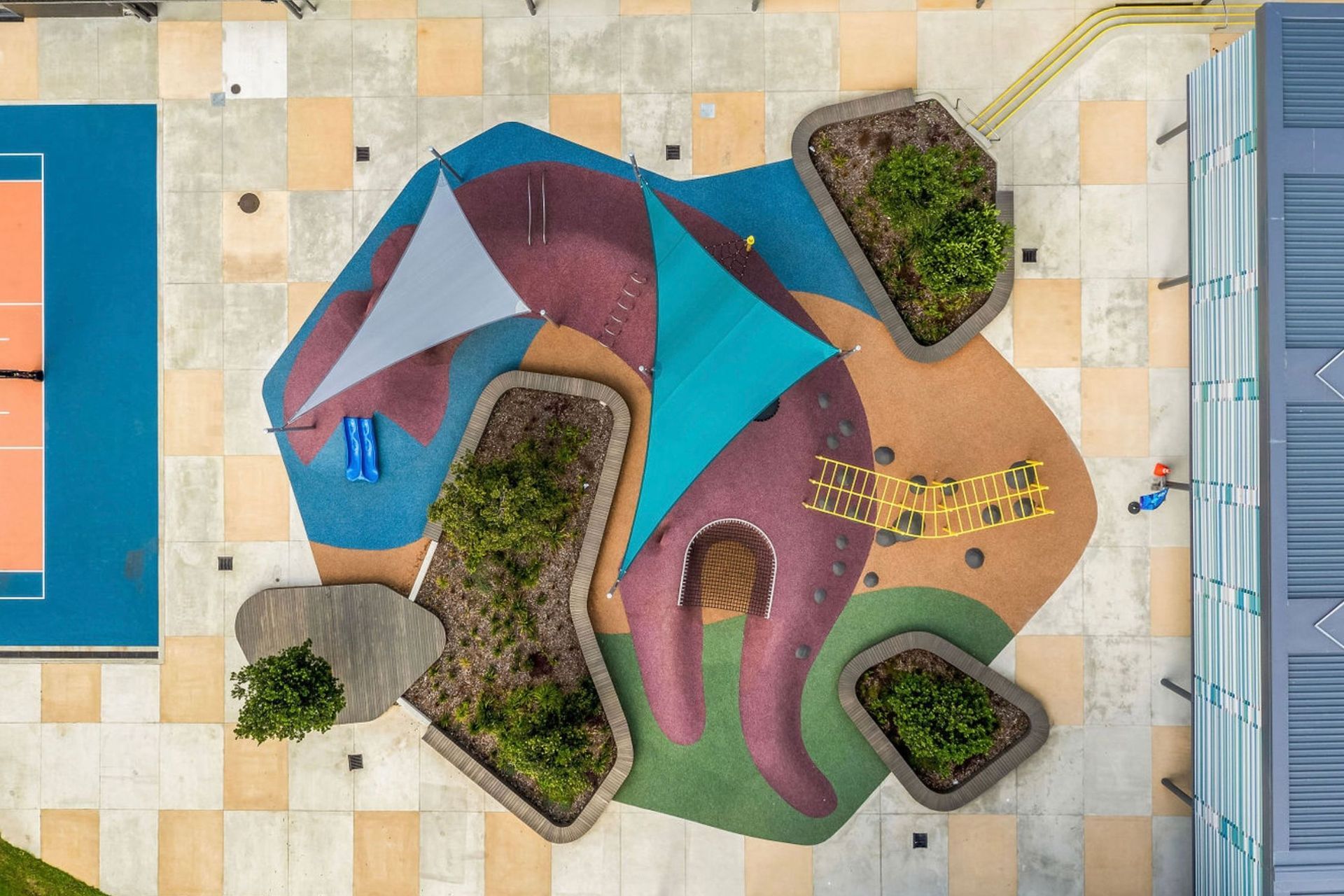
Murphy Landscapes was charged with bringing the architect's highly detailed site drawings to life. As a 'one-stop-shop' for quality landscaping products and services, the Murphy Landscapes team's soft and hard landscaping expertise made them an ideal choice for the project.
"When we started this project, we were handed a site that had been scraped flat and compacted with heavy machinery for development with no sign of topsoil or greenery. It was our job to reinstall a living environment, which took great care and passion," Murphy explains.
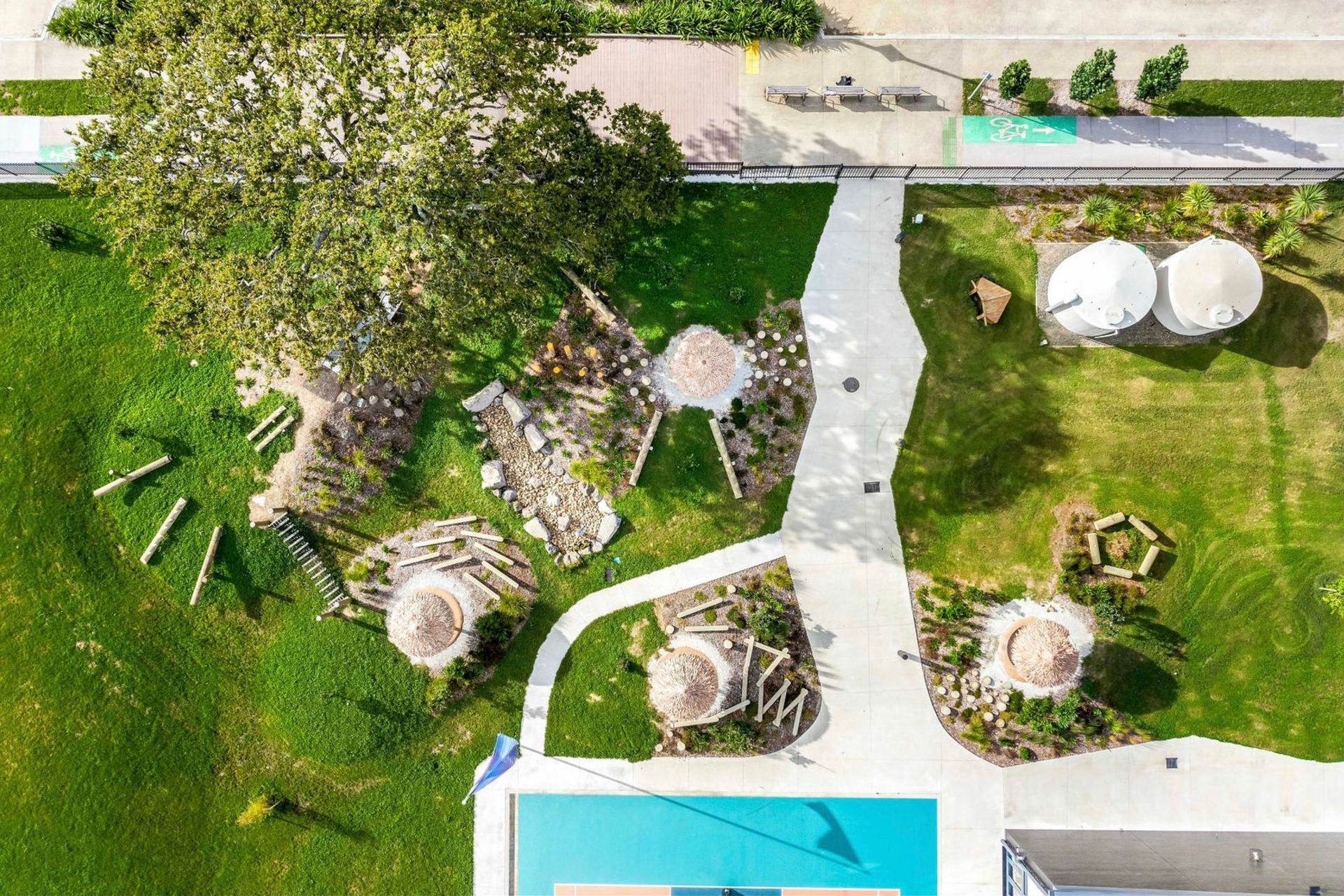
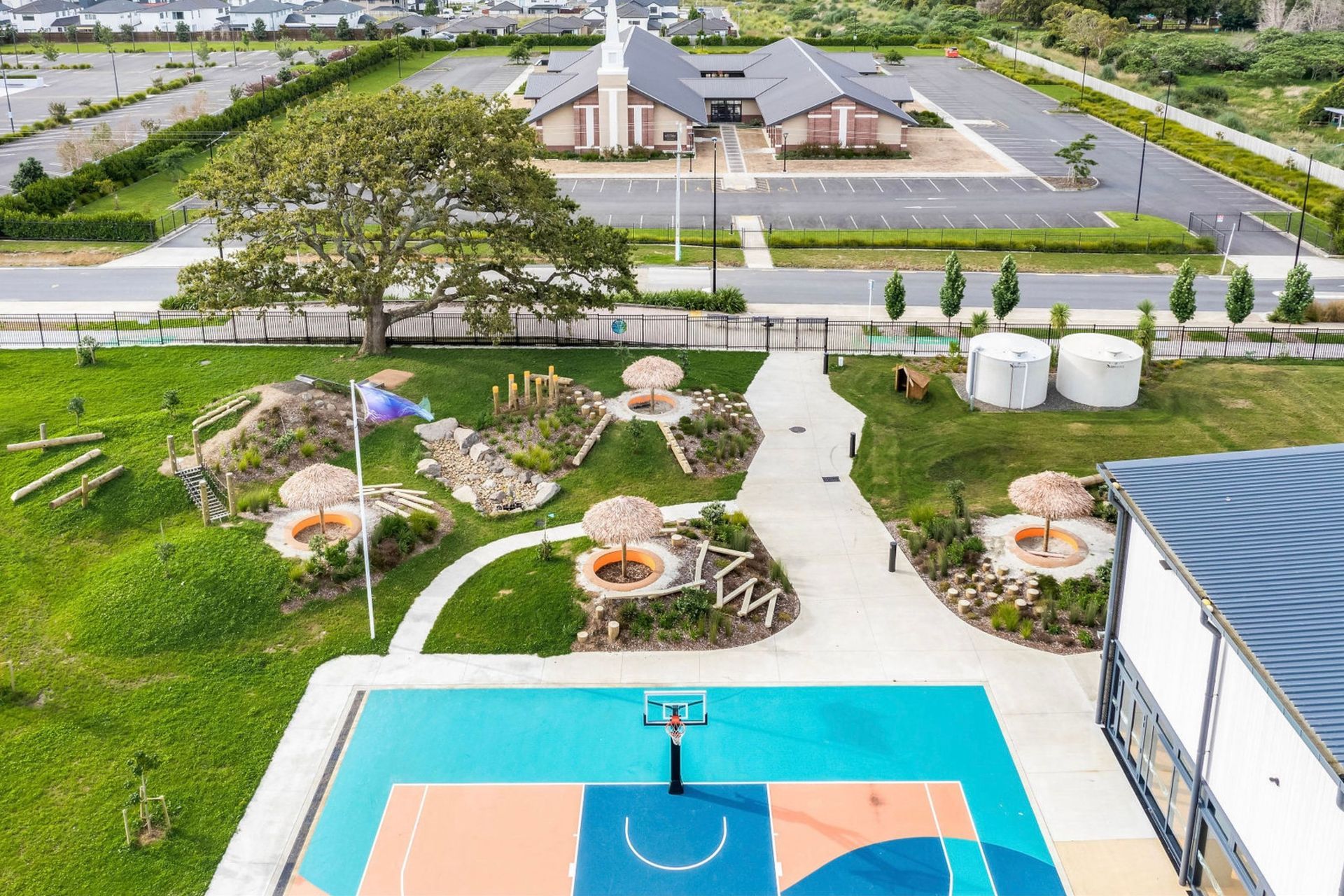
The landscape consists of two contemporary play areas inspired by the koura (crayfish) and pāpaka (mud crab), a wetland area, a playing field, basketball and netball courts, and a series of grassy mounds adding variation to the terrain.
Dispersed throughout the landscape are various timber and stone benches, platforms, and pathways built by Murphy and his team.
"All hard landscaping features were required to be constructed with curves of different radii to achieve a playful environment. This was an enjoyable challenge for the team, with great accuracy achieved across both our carpentry and stone masonry features," Murphy says.
These curved profiles allow the furniture to mirror the organic forms used across the playgrounds and wetland area.
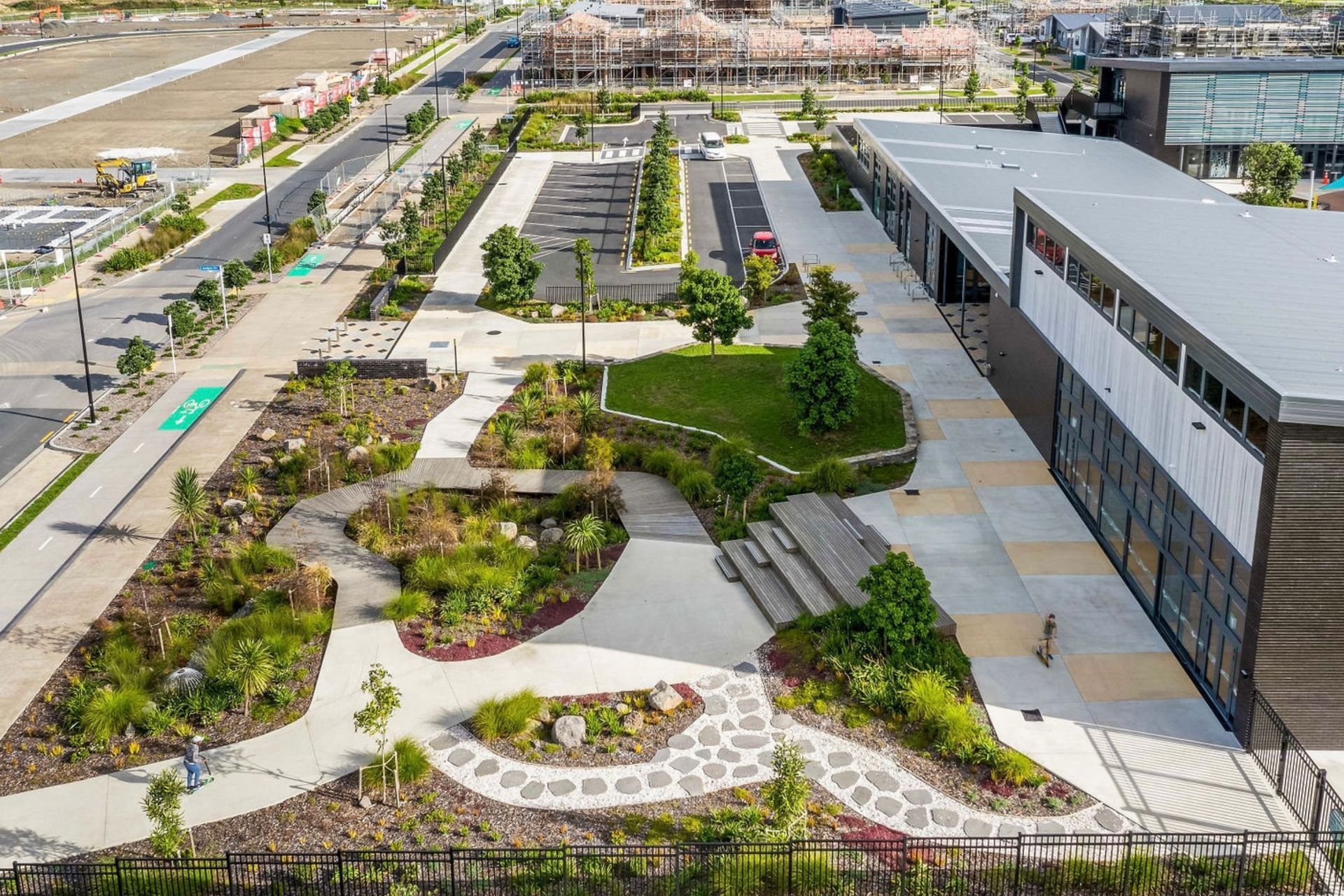
Situated at the front of the school property, the wetland area functions as an entrance to school grounds, with a garapa boardwalk leading visitors towards the school buildings over clusters of native plants.
"It's nice to put a lot of native plants in schools because those are the plants that kids will see in the outside world, so they're given the opportunity to learn about and interact with them. In the wetland area, we have roughly 30 to 40 species of native plants around the outside, and then towards the middle, we've planted a lot of machaerinas and oioi," Murphy says.
"It's also been designed so all the drains divert to the wetland area, and the water filters through the plants before it enters the stormwater system."
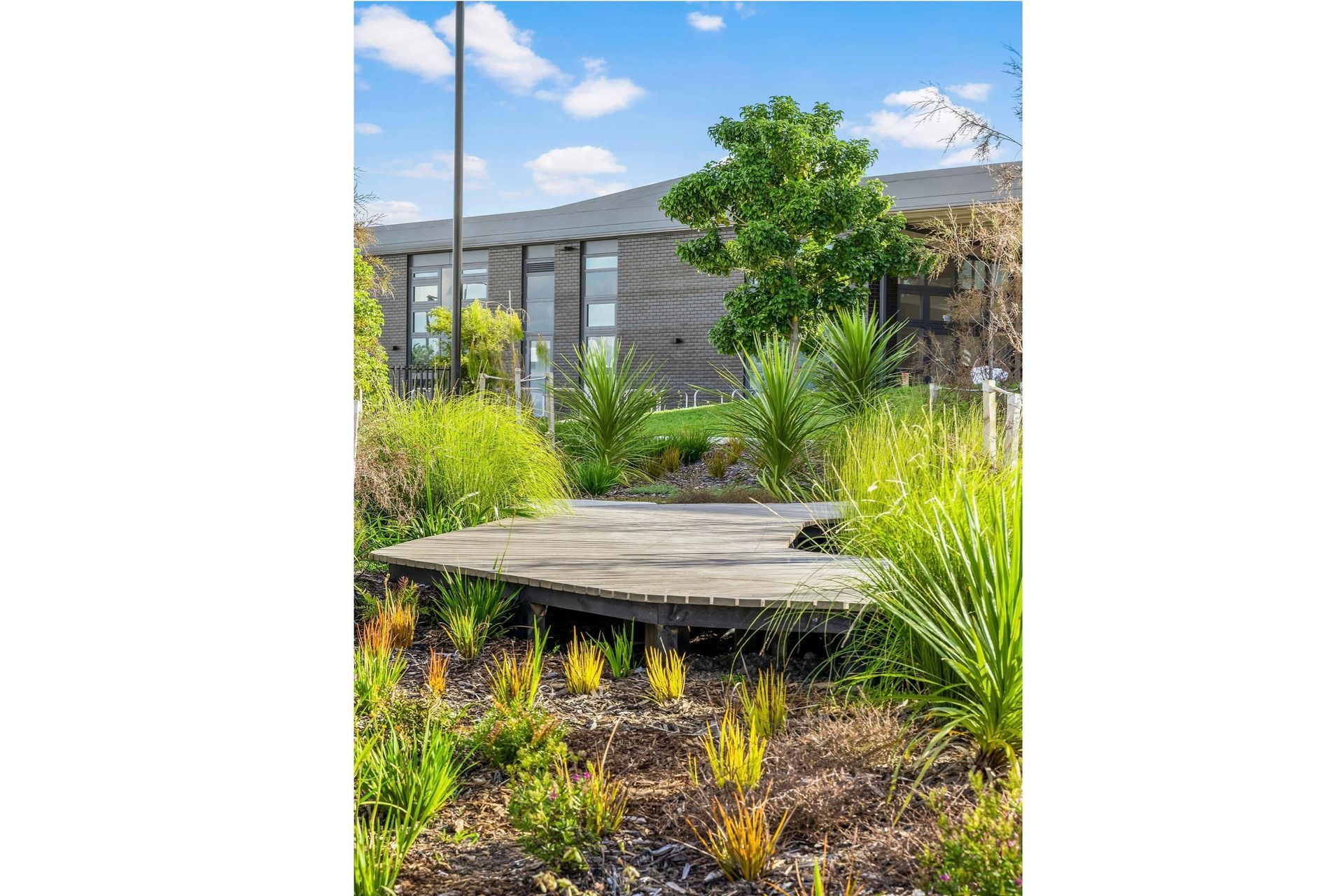
To ensure the living environment thrives for many years, Murphy says how they sequence, prepare, and install each material is crucial.
"An example of this is how we install our soil to ensure that we cause no damage to the soil structure by over-compaction. Because some areas of the site had limited or no access at different times throughout the project, there was a huge amount of planning involved to install topsoil in a way that was both efficient and could still maintain a high quality of installation. Our efforts are evident with such strong, healthy plant growth creating a vibrant and inviting feel at Mangapikopiko School."
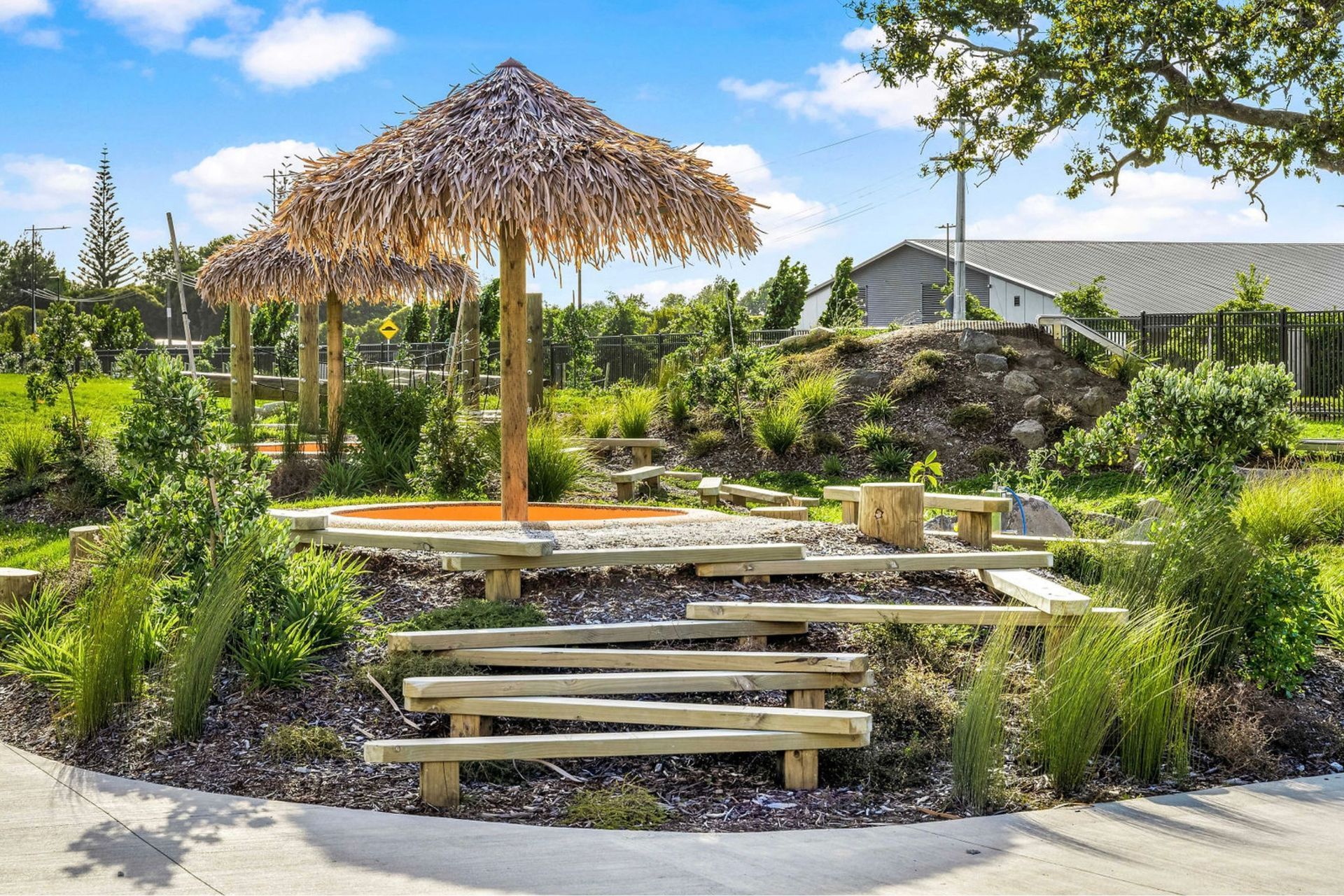

While installing delicate landscaping elements amid a large construction operation certainly had its challenges, it's clear Murphy, and his team enjoyed every minute of the project.
"Every project we do presents its own challenges, and this project was no different. Each element has to be completed to precise measurements within a tight construction programme, which can be complicated, but it's really cool seeing the drawings with a million different measurements on them and then the drone shots showing how we've nailed every curve."
After each school project, the Murphy Landscapes team works with the children to help them connect to their new environment. At Mangapikopiko School, the team assisted the kids with planting donated fruit trees, encouraging an interest in horticulture and a deep respect for their new landscape.
Learn more about Murphy Landscapes.